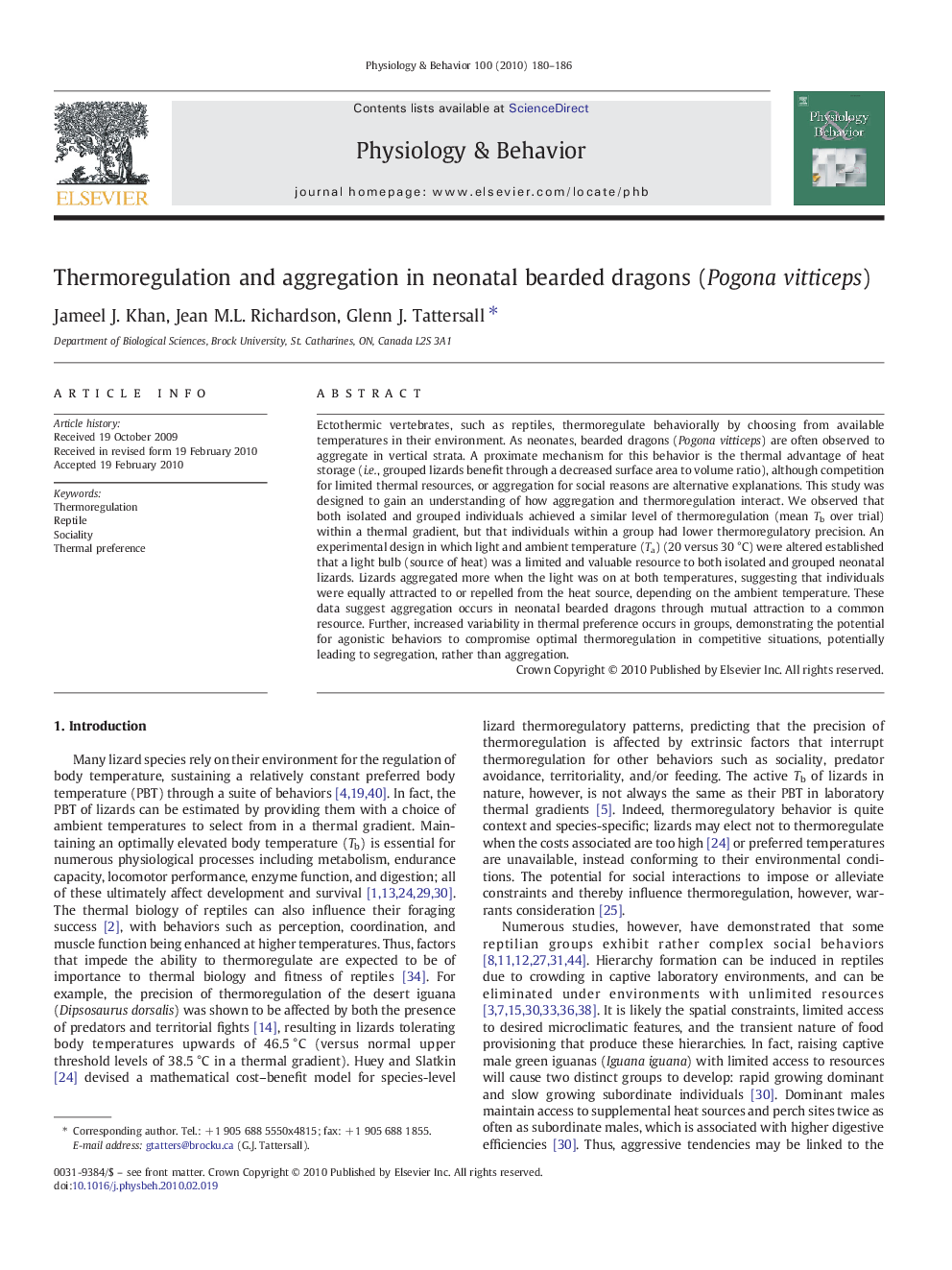| کد مقاله | کد نشریه | سال انتشار | مقاله انگلیسی | نسخه تمام متن |
|---|---|---|---|---|
| 2844898 | 1166369 | 2010 | 7 صفحه PDF | دانلود رایگان |

Ectothermic vertebrates, such as reptiles, thermoregulate behaviorally by choosing from available temperatures in their environment. As neonates, bearded dragons (Pogona vitticeps) are often observed to aggregate in vertical strata. A proximate mechanism for this behavior is the thermal advantage of heat storage (i.e., grouped lizards benefit through a decreased surface area to volume ratio), although competition for limited thermal resources, or aggregation for social reasons are alternative explanations. This study was designed to gain an understanding of how aggregation and thermoregulation interact. We observed that both isolated and grouped individuals achieved a similar level of thermoregulation (mean Tb over trial) within a thermal gradient, but that individuals within a group had lower thermoregulatory precision. An experimental design in which light and ambient temperature (Ta) (20 versus 30 °C) were altered established that a light bulb (source of heat) was a limited and valuable resource to both isolated and grouped neonatal lizards. Lizards aggregated more when the light was on at both temperatures, suggesting that individuals were equally attracted to or repelled from the heat source, depending on the ambient temperature. These data suggest aggregation occurs in neonatal bearded dragons through mutual attraction to a common resource. Further, increased variability in thermal preference occurs in groups, demonstrating the potential for agonistic behaviors to compromise optimal thermoregulation in competitive situations, potentially leading to segregation, rather than aggregation.
Journal: Physiology & Behavior - Volume 100, Issue 2, 11 May 2010, Pages 180–186